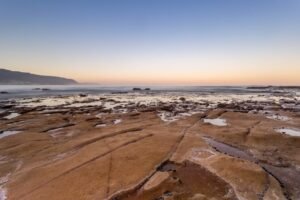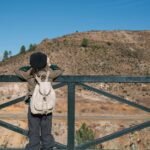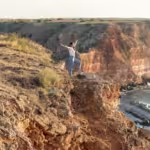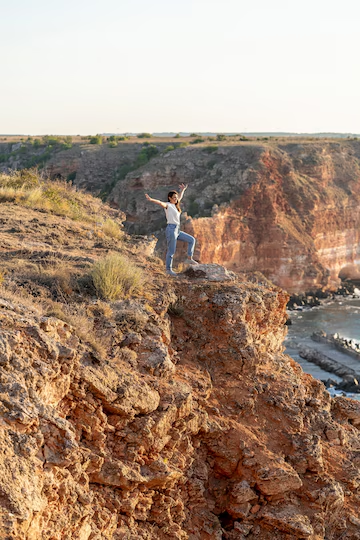America’s landscape is dotted with hidden treasures, often overlooked in the rush of modern life. These forgotten landmarks hold tales of bygone eras, waiting to be rediscovered by curious adventurers. In this article, we delve into some of these remarkable sites, shedding light on their historical significance and inviting you to explore the depths of America’s past.

1. Introduction
1.1 Unveiling Hidden Gems
In a fast-paced world dominated by technology and urbanization, it’s easy to overlook the rich tapestry of history woven into the American landscape. Yet, beneath the surface lie countless treasures waiting to be unearthed – forgotten landmarks steeped in history, each with its own story to tell.
1.2 Importance of Preserving History
Preserving these landmarks isn’t just about nostalgia; it’s about honoring our collective heritage and understanding the events that shaped our nation. By uncovering and safeguarding these sites, we ensure that future generations can connect with the past and learn from it.
2. The Grand Canyon Caverns
2.1 History of Discovery
Located in northern Arizona, the Grand Canyon Caverns are a testament to the power of nature’s handiwork. Discovered in 1927 by a pair of intrepid explorers, these caverns boast a rich history dating back millions of years.
2.2 Unique Features
What sets the Grand Canyon Caverns apart is not just their size – although they are among the largest dry caverns in the United States – but also their stunning geological formations. Stalactites, stalagmites, and other calcite deposits adorn the cavern walls, creating a mesmerizing underground landscape.
2.3 Visitor Experience
Today, visitors can embark on guided tours of the caverns, marveling at their natural beauty while learning about their geological and historical significance. From the eerie silence of the abyss to the thrill of exploring hidden chambers, a journey into the Grand Canyon Caverns is an adventure like no other.
3. Cahokia Mounds State Historic Site
3.1 Ancient Civilizations
Nestled in the heart of Illinois, the Cahokia Mounds State Historic Site offers a glimpse into the lives of the ancient Mississippian people. At its peak, Cahokia was the largest pre-Columbian settlement north of Mexico, with a population of over 20,000 inhabitants.

3.2 Architectural Marvels
What makes Cahokia truly remarkable is its sophisticated urban planning and architectural achievements. The site is home to over 120 mounds, including Monks Mound, the largest prehistoric earthen structure in North America.
3.3 Cultural Significance
For archaeologists and historians, Cahokia is a treasure trove of insights into pre-Columbian life in the Americas. Its significance extends beyond its archaeological value, serving as a reminder of the ingenuity and resilience of indigenous peoples.
4. Bodie, California
4.1 Ghost Town Chronicles
Tucked away in the Sierra Nevada mountains, Bodie is a ghost town frozen in time. Once a bustling gold-mining town with a population of nearly 10,000 people, Bodie’s fortunes declined with the depletion of its mineral wealth.
4.2 Preserving the Past
Today, Bodie stands as a remarkably well-preserved example of a 19th-century mining town. Visitors can wander the streets lined with weathered wooden buildings, peering into the past and imagining life in the Old West.
4.3 Tourist Attractions
Despite its remote location, Bodie attracts thousands of visitors each year, drawn by its eerie beauty and historical intrigue. From amateur photographers to history buffs, there’s something for everyone in this ghostly enclave.
5. Fort Jefferson, Dry Tortugas
5.1 Island Fortress
Situated off the coast of Key West, Florida, Fort Jefferson is a fortress unlike any other. Built in the 19th century to protect the strategic shipping lanes of the Gulf of Mexico, it is the largest masonry structure in the Western Hemisphere.
5.2 Historical Significance
Over the years, Fort Jefferson has served various roles, from military stronghold to prison for Civil War deserters. Today, it stands as a testament to the ingenuity of its builders and the tumultuous history of the region.
5.3 Ecological Diversity
Beyond its historical significance, Fort Jefferson is also home to a diverse array of wildlife, including nesting sea turtles and vibrant coral reefs. Its designation as a national park ensures that its natural beauty will be preserved for future generations to enjoy.





6. Conclusion
6.1 Rediscovering America’s Heritage
As we journey through the forgotten landmarks of America, we are reminded of the richness and diversity of our nation’s history. Each site tells a story – of triumph and tragedy, of innovation and perseverance – waiting to be heard by those willing to listen.
6.2 Call to Action: Explore and Preserve
In an age of rapid development and urbanization, it’s more important than ever to protect and preserve these cultural treasures. By exploring these forgotten landmarks and supporting efforts to conserve them, we ensure that they will continue to inspire and educate for generations to come.
FAQs
- Are these forgotten landmarks open to the public?
Yes, many of these landmarks are open to the public and offer guided tours for visitors.
- How can I support efforts to preserve these sites?
You can support preservation efforts by visiting these landmarks, donating to relevant organizations, and advocating for their protection.
- Are there any hidden gems in my area worth exploring?
Absolutely! Every region has its own hidden treasures waiting to be discovered – all it takes is a bit of curiosity and exploration.
- Can I visit these landmarks year-round?
While some landmarks may have seasonal closures or limited access, many are open year-round for visitors to enjoy


